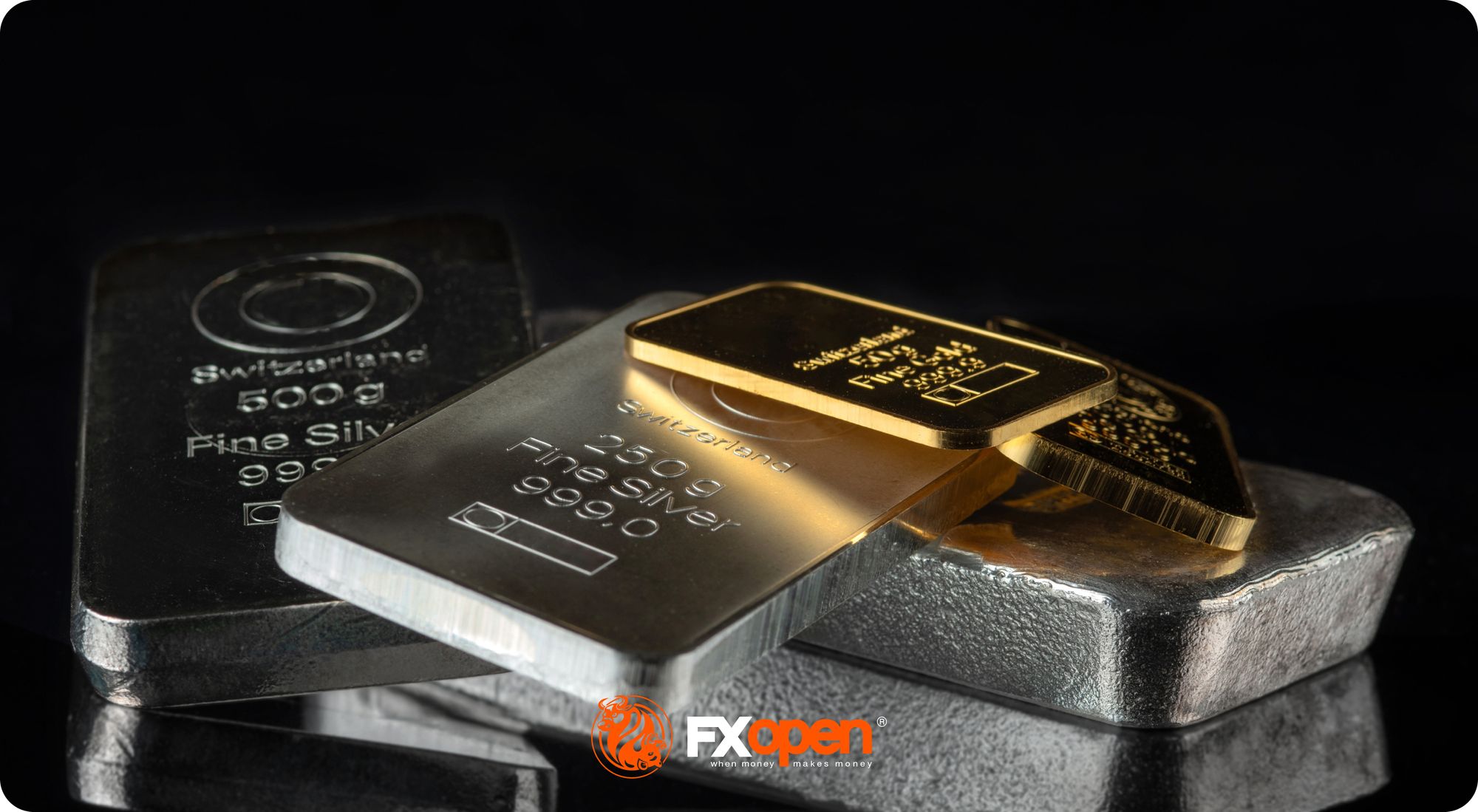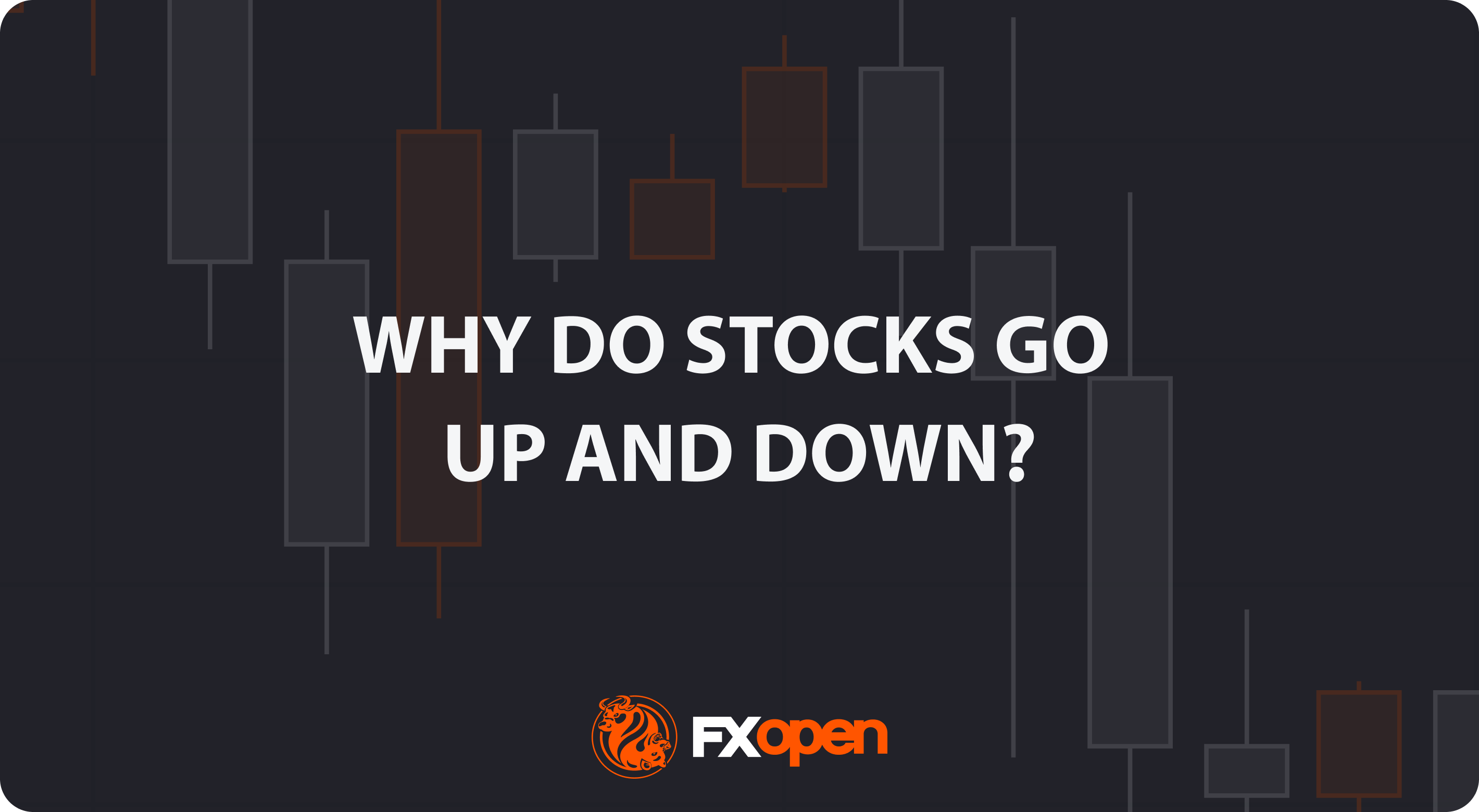FXOpen

The gold/silver ratio, which measures the relative value of these two precious metals, is a vital tool for commodity traders. Understanding this relationship helps identify market trends and trading opportunities. This article explores how to calculate, analyse, and trade the gold/silver ratio effectively, providing insights to enhance your trading strategies.
Understanding the Gold/Silver Ratio
The gold-to-silver ratio represents the number of silver (XAG) ounces needed to purchase one ounce of gold (XAU). For instance, a value of 70 means buying one ounce of gold takes 70 ounces of the white metal. It’s a valuable indicator of the comparative value between the two precious metals.
Historically, the relationship has seen significant fluctuations. During the Roman Empire, it was around 12:1. In the 20th century, the ratio averaged around 47:1, reflecting changing market dynamics. Recently, it has ranged from above 60:1 to over 90:1, influenced by various economic and geopolitical factors.
A high figure suggests that silver is undervalued relative to gold, indicating a potential buying opportunity for XAG or a selling opportunity for XAU. Conversely, a low figure implies that silver is overvalued compared to gold. Traders often use this metric to make strategic decisions, such as going long on XAG and short on XAU when the ratio is high, expecting it to revert to historical averages.
It’s also a reflection of market sentiment. When economic uncertainty is high, gold, as a so-called safe-haven asset, may increase in value relative to silver, widening the proportion. Conversely, silver may outperform the yellow metal during economic stability due to its industrial uses, narrowing the differential.
Recent History of the Gold/Silver Ratio
The historical gold/silver ratio has experienced significant fluctuations driven by global economic events. During the 2008 financial crisis, it spiked to over 80:1 as investors flocked to gold as a so-called refuge asset. It then fell sharply, reaching a low of 32:1 as central banks rolled out stimulus measures to support growth.
In 2020, amid the COVID-19 pandemic, the ratio reached an all-time high of 126:1 due to heightened economic uncertainty and gold's appeal as a so-called safe-haven asset. However, as economies began recovering and industrial demand for the white metal increased, the relationship narrowed, dropping to around 65:1 at the beginning of 2021. Key drivers included expansionary policies and the recovery of industrial activities linked to silver demand.
Interested readers can use FXOpen’s free TickTrader platform to explore the historical performance of these two precious metals.
Calculating the Gold/Silver Ratio
Calculating the ratio is straightforward. Simply divide the current price of gold by the current price of silver. For example, if XAU is priced at $1,800 per ounce and XAG at $25 per ounce, the calculation is:
$1800/$25 = 72
This means it takes 72 ounces of silver to buy one ounce of gold. However, traders don’t need to calculate this themselves; TradingView users can enter ‘FXOpen:XAUUSD/FXOpen:XAGUSD’ into the ticker search to display the gold-to-silver ratio chart.
Factors Influencing the Gold/Silver Ratio
The gold/silver ratio is influenced by various factors that affect the value of these two precious metals. Key factors include economic indicators, market sentiment, and geopolitical events.
Economic Indicators
Inflation rates, interest rates, and economic growth directly impact the relationship. High inflation typically increases demand for gold as a hedge, widening the relationship. Conversely, low inflation can favour the white metal due to its industrial uses, narrowing the proportion.
Interest rate changes also play a crucial role. When interest rates rise, gold often becomes less attractive compared to interest-bearing assets. Economic growth similarly boosts industrial demand for silver.
Market Sentiment
Investor sentiment towards risk significantly affects the measurement. During periods of economic uncertainty or market volatility, investors flock to gold for its so-called refuge properties, increasing the ratio. For instance, during the COVID-19 pandemic, heightened uncertainty led to a surge in XAU, pushing the ratio to record highs. Conversely, in stable economic conditions, silver's industrial demand can outpace the yellow metal.
Geopolitical Events
Political instability, trade wars, and other geopolitical events can cause fluctuations in the proportion. For example, tensions between major economies or unexpected geopolitical crises often drive investors towards the yellow metal. On the other hand, the resolution of such conflicts or stable geopolitical environments can boost industrial production and demand for silver and narrow the relationship.
Supply and Demand Dynamics
Silver's dual role as both a precious metal and an industrial commodity makes it more susceptible to supply chain disruptions and changes in industrial demand. Gold, primarily seen as a store of value, is less affected by industrial demand but highly influenced by investment demand and central bank policies.
Trading the Gold/Silver Ratio
Trading this relationship involves leveraging the relative price movements of each asset to make strategic trading decisions. Various strategies can be employed to capitalise on this ratio, each offering unique opportunities depending on market conditions.
Strategies Based on Trends
Traders often monitor the trend of this metric and the individual trends of each metal to determine potential trading signals:
Gold-Silver Ratio Uptrend
- General Uptrend: In this scenario, both assets are rising, but the ratio is also increasing, indicating gold is outperforming silver. Traders may buy XAU, expecting it to continue its relative strength.
- General Downtrend: When both metals are falling, but the ratio is rising, silver is underperforming. Traders may sell XAG, anticipating further weakness compared to XAU.
Gold-Silver Ratio Downtrend
- General Uptrend: If both metals are rising and the ratio is falling, silver is outperforming gold. Traders might buy XAG to capitalise on its relative strength.
- General Downtrend: When both metals are declining and the ratio is falling, gold is underperforming. Traders may sell XAU, expecting continued relative weakness.
Trading Extreme Highs and Lows
The gold/silver relationship is generally deemed ‘fair’ when the figure is around 50, implying that neither metal is overvalued/undervalued relative to the other. However, it can reach historical extremes, providing additional trading opportunities:
Historical Highs (80-100)
- Uptrend in Both: When the ratio is historically high, gold is considered expensive compared to silver. If both metals are in an uptrend, traders might long XAG, expecting a correction in the metric as it catches up.
- Downtrend in Both: If both metals are declining, traders might short XAU, anticipating a relative decrease in its value compared to XAG.
Historical Lows (40-60)
- Uptrend in Both: When the ratio is historically low, gold is viewed as cheaper relative to silver. In an uptrend, traders might long XAU, expecting it to rise.
- Downtrend in Both: If both metals are falling, traders might short XAG, anticipating it will continue to lose more value compared to XAU.
The Bottom Line
Trading the gold/silver ratio can unlock unique opportunities in the market. By understanding its dynamics and employing strategic approaches, traders can potentially enhance their trading strategies. To start trading this unique relationship via CFDs, consider opening an FXOpen account to access a wide range of advanced trading tools and resources to support your strategies.
FAQs
What Is the Gold-to-Silver Ratio?
The gold-to-silver ratio measures how many ounces of silver are needed to purchase one ounce of gold. It provides insights into the relative value of these precious metals. A high figure suggests silver is undervalued relative to gold, while a low number suggests the opposite.
How to Calculate the Gold-to-Silver Ratio?
To calculate the ratio, divide the current price of gold by the current price of silver. For example, if gold is priced at $2,000 per ounce and silver at $20 per ounce, the proportion is $2000/$20, or 100:1. This means one ounce of gold costs 100 ounces of silver.
Why Is the Gold/Silver Ratio So High?
The ratio can be high due to factors like economic uncertainty, increased demand for gold as a so-called safe-haven asset, and reduced industrial demand for silver. Since 2021, it has remained elevated above 75:1 due to ongoing market uncertainties.
How to Trade the Gold/Silver Ratio?
Trading the relationship involves examining the trends of both assets and comparing their performance to the metric. Traders often buy silver and sell gold when the number is high, expecting it to decrease. Conversely, they sell silver and buy gold when the figure is low, anticipating an increase.
This article represents the opinion of the Companies operating under the FXOpen brand only. It is not to be construed as an offer, solicitation, or recommendation with respect to products and services provided by the Companies operating under the FXOpen brand, nor is it to be considered financial advice.
Stay ahead of the market!
Subscribe now to our mailing list and receive the latest market news and insights delivered directly to your inbox.








